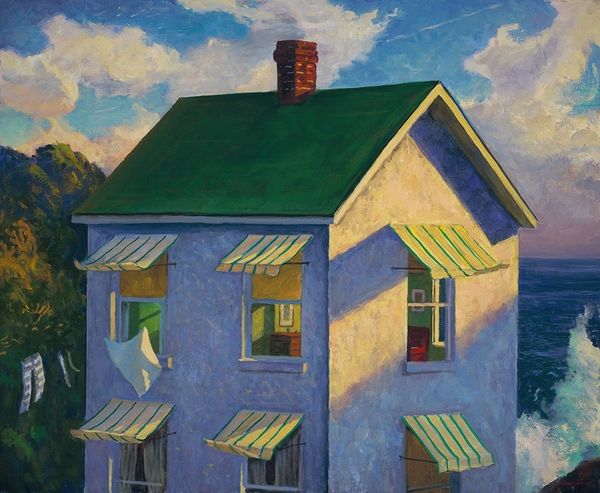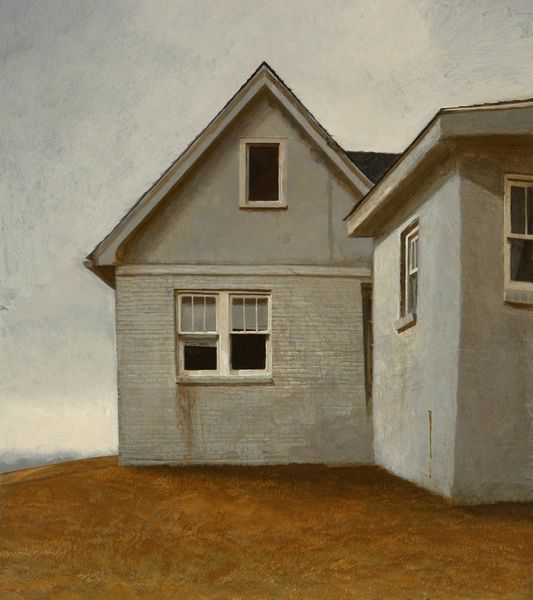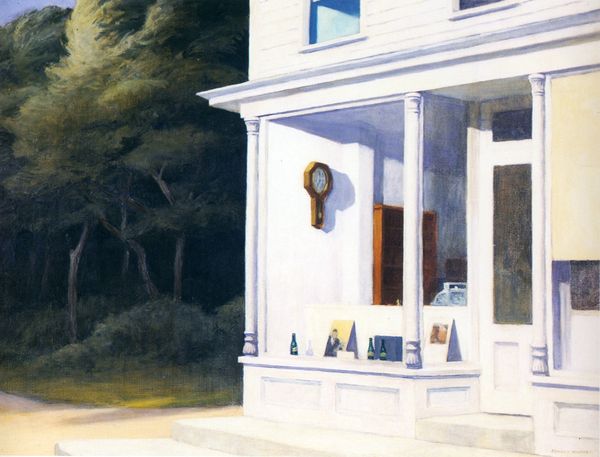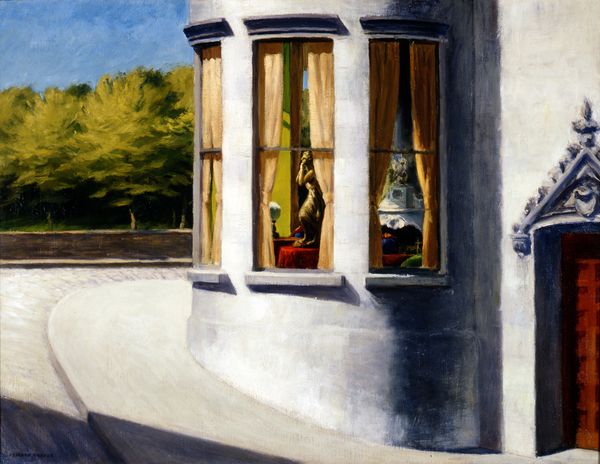
painting, oil-paint
#
portrait
#
sky
#
painting
#
oil-paint
#
landscape
#
house
#
figuration
#
oil painting
#
cityscape
#
modernism
#
realism
#
building
Dimensions: 127 x 101.6 cm
Copyright: Edward Hopper,Fair Use
Curator: Here we have Edward Hopper's "Second Story Sunlight," completed in 1960. It’s an oil painting, currently residing here at the Whitney. Editor: Immediately, I'm struck by how still it feels. The geometry of the house, the women posed like statues, and that looming green mass behind… there’s a strange tension in this quiet domestic scene. Curator: It's Hopper's signature style, isn't it? That sense of underlying narrative, yet remaining enigmatic. He captures the American experience in a rapidly changing landscape. Note how the house itself, almost stark white, acts as a stage. These newer architectural structures, often symbols of societal progression, set the tone. Editor: And it's interesting you call it a "stage," because it does feel performative. Sunlight has often served as a symbol of awareness and attention to detail. What is striking is that despite its luminescence, this scene feels emotionally distant and alienating. The positioning of these women, almost like figures in a frieze, emphasizes isolation and disconnection. The cool colors underscore an emotional frigidity. Curator: Absolutely. Hopper masterfully uses light to accentuate that isolation. This focus on the mundane and often stark reality reflects a post-war American psyche struggling to find meaning amidst affluence. This work also speaks to the societal role of women in the early 1960s. There is perhaps commentary here on domestic expectations, freedom, and constraints. Editor: You know, it reminds me of classicism, but twisted. Sunlight is symbolic of purity, truth and awareness and yet in its modern form it serves only to enhance the subtle yet inescapable melancholy of modernity. These women, rather than being bathed in warm welcoming golden tones, they’re placed squarely in direct light, rendering the scene alienating. Curator: It is almost as if, the sunlight is revealing, as you suggest, a kind of "truth" that isn't necessarily comforting or ideal, which aligns perfectly with Hopper's interest in depicting the nuanced reality of his time. Editor: Looking closer, I do now realize why it has this appeal, the artist understands the ability of sunlight to add an almost clinical detachment in daily living and routines. Curator: Thank you, this truly deepens the viewer's engagement with the work and the themes Hopper presented us.
Comments
No comments
Be the first to comment and join the conversation on the ultimate creative platform.













